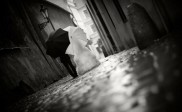7 Essentials for Mountain Photography
Whether you’re an amateur photographer with an interest in mountain photography, or a professional photographer looking to brush up on your skills, these essential tips below will help you achieve beautiful mountain photographs.
1- Weather: In order to get the most out of your mountain photography excursion, you must be prepared for weather conditions. Begin by taking into account what season it is, then going further, be prepared for storms or alternate weather that can spring up anytime at high altitudes. During the cold winter months, mountains can be snowy, icy and overall, a slippery situation. If you are going out during warm months, bringing suntan lotion, a hat and bug spray will be beneficial. Be sure, that whichever weather condition you are going to be in, that you are prepared by obtaining the right kind of clothing and protective gear.

Photo by scotto
2- The Magic Hours: Most photographers agree that the best time to capture beautiful photographs is during the early morning or late evening. Both settings involve unique lighting situations caused by a rising or setting sun. The reason this is typical in mountain photography is because the sun, at either of those hours, will not produce harsh lighting or cast shadows on the subject you are trying to capture. Furthermore, midday heat from the sun can induce a haze in the air, which makes photos look polluted. This is not the case at dawn or dusk. Additionally, there won’t be a lot of human visitors at these times either.

Photo by shubat
3- Lens: Generally, when shooting mountains, you’ll want a lens capable of producing wide angle photos. A good range for a wide angle lens in this sense would be a 24-28mm. Also worthy of mentioning, is having a lens that has zooming capacities in about the 24-70mm range. These lenses will allow you to capture mountains on a grand scale, but also give you the option to zoom in to get details of certain subjects in your frame.

Photo by mutrus
4- Filters: There are basically three types of filters that can come in handy during mountain photography. Those are the ND Grad filter, a UV filter and a polarizer filter. The ND filter will help you in high contrast areas, where the foreground may be dark and the sky is very bright. A UV filter can come in handy for keeping your lens protected as well as filtering out sunshine, especially if you’re on top of a mountain where the intensity of the sun is greater. A polarizer filter can be beneficial for more than one occasion. It helps to cut through hazy skies and, if you’re photographing during winter months, the polarizer filter will help cut out glare and light reflected by the snow.

Photo by Castillion
5- Tripod: Tripods are really useful in mountain photography for two reasons. One, for producing long exposure shots during a dusk or dawn setting, a tripod is very beneficial for a steady shot. The second reason is a tripod can enable you to take shots from unusual angles allowing you to break the mold and form a new perspective. Tripods are a really great tool, so make sure you bring it along. Plus, if you happen to be using a large lens, the tripod can help take away some of that heavy carrying.

Photo by NakorTBR
6- Composition: Normally, after you’ve conquered your lighting issues and figured out what type of lens is best for your situation, you need to adjust and compose your shot. One tip for fixing your composition is to not zoom in too much, because the mountain will lose its liveliness and tend to look boring. Another aspect to consider is making sure there is some foreground in your frame so the viewer can gain a sense of proportion of the mountain.

Photo by kimjew
7- Aperture: Settings for aperture, in regards to landscape photography, is pretty much standard. You will want to have both the background and the foreground in sharp focus within your frame. In order to do this, your f-stop setting should be set at high value (small aperture). This can be anywhere from f/8 to f/22, depending on what type of camera you are using.
These tips are not only useful, but are also easy to utilize. Once you can get into the swing of things, these tips will help you to compose beautiful mountain photographs.

Photo by ghaxx
If you loved this article about mountain photography, don’t forget to add a comment in the section below.




Amazing tips for my favorite kind of photography – thank you for sharing!
these tips are so useful, i love photographing mountains, i try to take as many as i can when im in europe. Wide angle lenses really do make the photo look so much better!
Frank,
Just got a Sony a6000 for Christmas, can’t wait to start shooting. I live near Chattanooga, TN. so you know that there’s some Beautiful scenery here. your tips and pictures should be very helpful.
Great tips- I am going to use it next time I visit the White Mountains in New Hampshire
Thanks